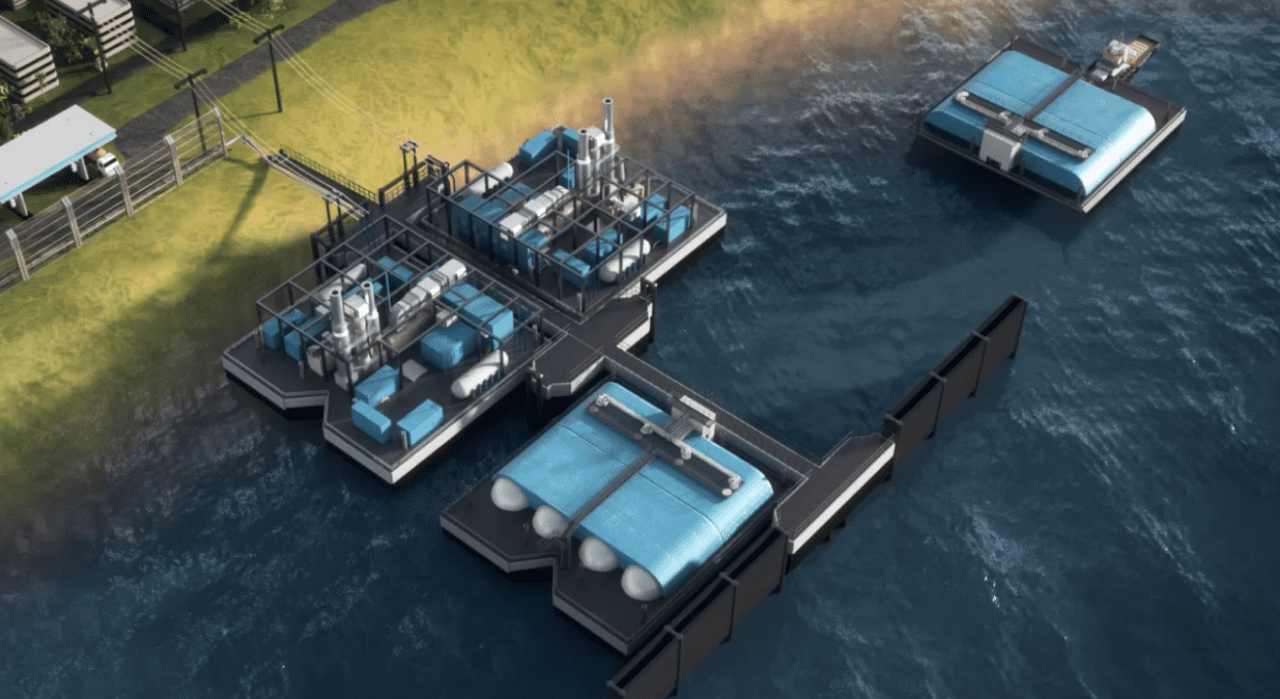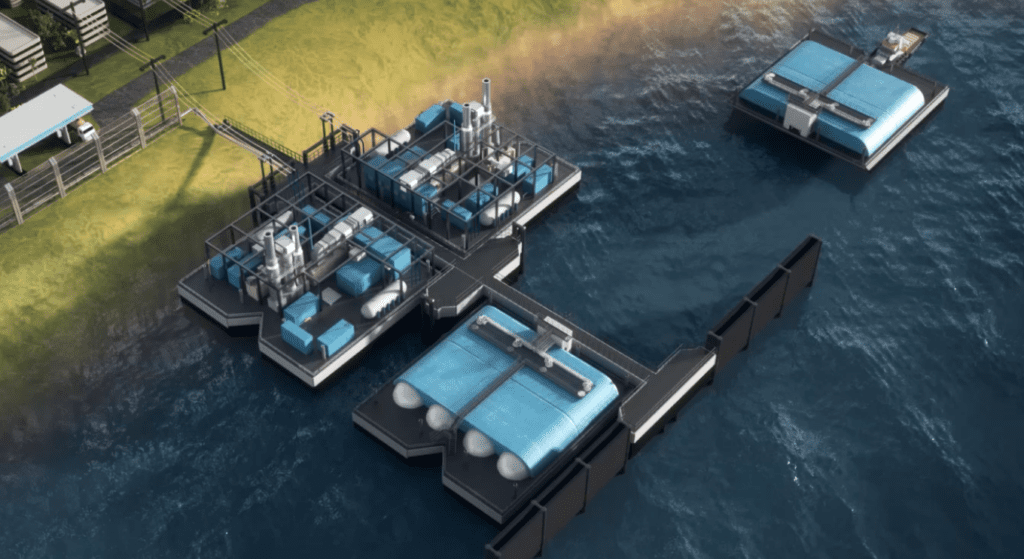
The government of Papua New Guinea (PNG) has entered a joint venture with a nationally-owned power producer in a project to bring additional electricity generation capacity to the island nation. The system will utilize a process featuring liquefied natural gas (LNG) and could eventually be converted to work with hydrogen as the fuel.
Singapore-based Twenty20 Energy on July 12 said it will roll out its Power Island Floating Storage Regasification & Power, or FSRP, solution in a dozen locations across Papua New Guinea as part of the PAWA PNG project. Twenty20 is supporting the joint venture between the government and Dirio Gas & Power, an independent power producer in PNG that focuses on natural gas-fired installations.
PAWA PNG will provide 283 MW of what officials said would be a “less expensive and more reliable” electricity supply, with lower emissions, as it primarily replaces older diesel fuel-based power generation. The project is designed to bring additional electricity to areas where it will support economic and social development objectives.
Three Components
Twenty20 Energy on Tuesday said its proprietary Power Island FSRP includes three components, supported by what it called a “comprehensive LNG fuel logistics solution.” The components include the FSRP power barges, which include power generators and regasification equipment, and where power generation from gas turbines and waste energy takes place. The system also includes fuel barges, which feature LNG storage tanks that supply fuel to the gas turbines. The barges have 30 days of LNG supply, and form the remote fuel bunkering solution.

The system also includes floating piers, which will moor the barges in each of the 12 locations.
“Our Power Island FSRP design leverages the abundance of domestically produced LNG in Papua New Guinea, delivering a cost-effective, environmentally friendly solution to power generation for coastal communities,” said Geoff Lawrence, CEO of Twenty20 Energy. “The adoption of the technology in Papua New Guinea demonstrates that the Power Island FSRP should be an attractive solution to similar coastal and island communities across the Asia-Pacific region and around the world.”
The power island project will deliver a solution designed and tailored specifically to Papua New Guinea’s energy requirements. The project represents what Twenty20 Energy and PNG officials called the most efficient and cost-effective solution to harness the country’s domestic LNG supply for powering the country, while also supporting the goal of 70% electrification by 2030. Officials estimate only 13% of PNG’s population has access to power, predominantly in the major cities. The electricity in the country’s remote locations is usually provided by standalone diesel generators.
Floating Piers at 12 Sites
The Twenty20 Energy design calls for floating piers to be built and transported to 12 different sites. The power barges and fuel barges will be built and transported to the floating piers, where they will be moored. When in need of additional fuel, the fuel barges will travel to one of three LNG bulk storage hubs, where they will be filled and transported back to the floating pier.
The 12 power islands will be located just offshore outside a dozen cities. Three locations that are considered more strategic—Daru, Lae, and Lihir—will also host LNG bulk storage facilities. The nine other locations are Manus Island, Buka Town, Kimbe, Alotau, Madang, Rabaul, Wewak, Kiunga, and Kikori.
Twenty20’s FSRP features two specific unit sizes with differing outputs, ranging from 8.6 MW to 21.9 MW, that will be used in each location. Each power island can be modified according to its growth, so as a location grows, a larger unit can be brought in—with the smaller unit available to be moved to a new location.
Twenty20 Energy began its design of the Power Island FSRP in 2018, and the company has since conducted both a full engineering and commercial study, as well as an independent engineering assessment to confirm the design’s validity. Twenty20 said its intellectual property includes its plant and auxiliary configuration, combining power generation, fuel storage and bunkering, and transportation. “The design requires minimal land use and is ultimately mobile to accommodate near-term and future expansion needs,” the company said, noting that in the future, “the Power Island FSRP solution can be converted from LNG to hydrogen fuel, which is completely renewable and delivers power generation with zero carbon emissions.”
“This PAWA PNG Power Island Project provides for decades of clean, reliable electricity to many PNG citizens utilizing domestically sourced and produced energy,” said Augustine Mano, managing director at the Mineral Resource Development Company (MRDC). MRDC is a wholly state-owned enterprise established to hold and manage provincial government and landowner equity interests in mineral and petroleum development projects. “This will assist the PNG government in achieving national energy security and independence while enhancing the lives of the people of PNG via the provision of reliable, cost-effective electricity supply,” said Mano.
—Darrell Proctor is a senior associate editor for POWER (@POWERmagazine).
The post Regasification Project Will Provide New Power for Papua New Guinea appeared first on POWER Magazine.